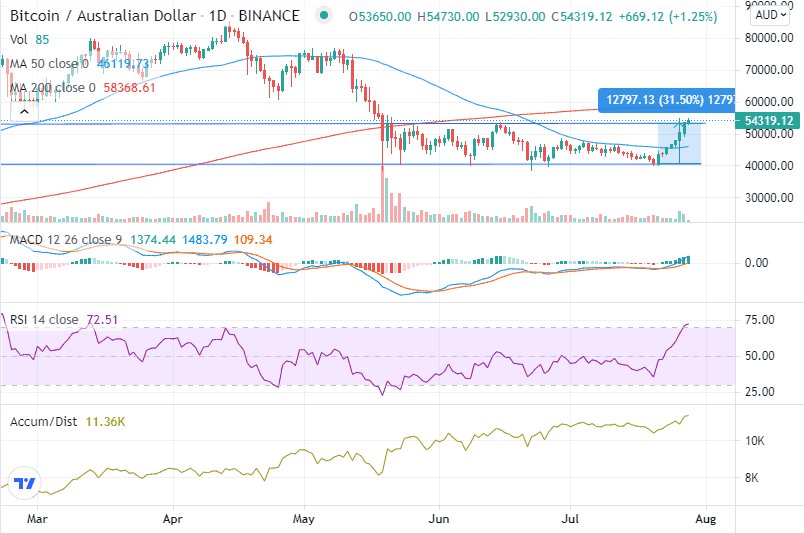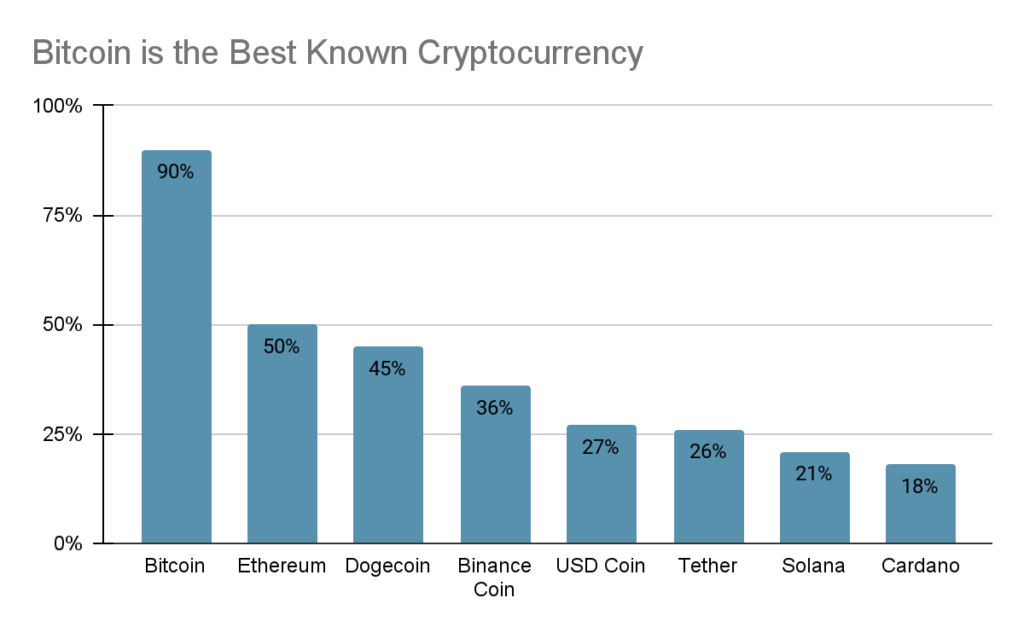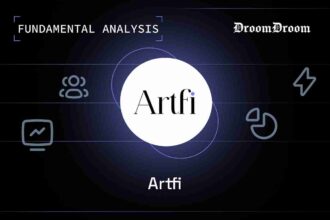Identifying a profitable crypto coin worth investing in is not easy, you need a deep understanding of the markets to make the right choice. This is a complete guide for unraveling the intricacies and providing a pathway to pick out a hidden gem in the cryptocurrency world towards making profitable investments.
- Introduction to Cryptocurrency Investing
- Fundamental Analysis of Cryptocurrencies
- Technical Analysis for Profitable Crypto Coins
- Price Trends and Patterns
- Support and Resistance
- Trading Volume
- Indicators and Oscillators
- Market Sentiment
- Evaluating Tokenomics and Utility
- Token Economics
- Supply and Scarcity
- Inflation and distribution
- Utility and Functionality
- Staking and Governance
- Risks and Considerations
- Useful Tips and Strategies for Investment
- Diversification
- Risk Management
- Long-Term vs. Short-Term Investing
- HODL (Hold On for Dear Life)
- Staying Informed
- Conclusion
This guide carefully examines the basic and technical elements of investments in profitable crypto coins. This gives the investor a wide understanding of what is being analyzed, including scrutinizing market cap, white papers, adoption, and real-world use cases in a volatile environment.
Introduction to Cryptocurrency Investing
Twitter has additional information on the same
Digital assets, such as crypto coins that are secured through cryptography have been regarded as viable avenues of investment. Moreover, such instability offers them possibilities and limitations. Investors assets should always recognize the profits and losses that come with the investment before entering the market.
Fundamental Analysis of Cryptocurrencies
Market Capitalization
One crucial measure that indicates how expensive a currency is on the market is called “market capitalization”, or just “market cap”. It is arrived at by multiplying the prevailing value of an individual coin by the number of coins in existence.
Large vs. Small Market Caps
Larger market cap coins such as Bitcoin and Ethereum give more stability because they were already established positions and widely accepted. These tend to be volatile and, therefore, they are perceived as less risky investments. On the other hand, their growth potential may not be as high compared to small-cap coins.
Smaller Market Caps
Smaller Cap Coins possess higher chances of growth but are associated with more risks. Sometimes, these are coins for new projects and technologies. Such opportunities can also come with high volatility and susceptibility to shocks in the market.
Project White Papers
A cryptocurrency project must be accompanied by a white paper, which serves as its foundation. It specifies key elements of the project in terms of technicalities, objectives, vision, technology, applications, users, and problems that are addressed.
Key Components
A detailed white paper should address the specifics related to cryptocurrency, the consensus mechanism, scaling, tokenomics (distribution, burning, governance), and a defined roadmap.
Assessing Quality
In this respect, a good white paper shows evidence of intensive research, concise problems and viable solutions. Lack of description, contradictions, or abstract ideas might be signs that the feasibility of the project should be questioned.
Development Team
Understanding the development crew of any cryptocurrency project is essential in ascertaining whether it is worthy and can succeed.
Expertise and Experience
The project is competent, consisting of experienced people from blockchain technology, cryptography software developers, and related fields, who inspire confidence that the project will deliver on its promises.
Transparency and Track Record
Individuals who are open about their profile, possess verified credentials and demonstrate credibility in previous projects and contributions to the cryptocurrency industry make the project dependable.
Clear Diligence
For validity of the teams’ competencies and integrity, proper research should be made on members’ profiles, and past works in the crypto-community, as well as analysis or assessment of their social accounts online.
Adoption and Real-World Use Cases
It is vital in measuring a cryptocurrency’s utility value and its use in the day-to-day situations of life.
Utility and Adoption: Those cryptocurrencies that provide actual use of crypto beyond mere speculative trading and enable DeFi, cross-border payments, and even provide solutions for issues of supply chain management tend to have better chances for longevity.
Network Effect: The network effect should be emphasized, as it means that an increase in usage translates into better performance. The more people, business entities, and platforms using one cryptocurrency create its utility.
Technical Analysis for Profitable Crypto Coins

Price Trends and Patterns
Price chart analysis identifies patterns, support and resistance levels, and trends that help investors decide when to enter into or exit from a market.
Support and Resistance
The different price levels are resistance and support areas where it is difficult for a cryptocurrency’s price to move above or below. Assisting in establishing price movements by identifying such levels.
Trading Volume
This implies that high trader volumes signal interest in the market as well as liquidity, and these factors affect price movement. This is significant for determining the direction of prices and assessing the mood in markets.
Indicators and Oscillators
Such technical indicators as the Relative Strength Index (RSI), Moving Average Convergence Divergence (MACD), and moving averages assist in analyzing the price momentum, overbought or oversold situations, and possible trend reversal.
Market Sentiment
The crypto market has social media as one of its important drivers, together with other sentiments from a community. Tracking talks, sentiment analysis, and keeping an eye on a community’s events show the mood of the market and may be reflected in coin prices.
Evaluating Tokenomics and Utility
Token Economics
The tokenomics of a cryptocurrency is composed of several issues to be explained.
Supply and Scarcity
Scarcity increases the value when limited numbers of tokens are supplied or there is a way of token destruction.
Inflation and distribution
The long-term value of a coin depends on how the tokens are divided. There should also be an anti-inflationary mechanism.
Utility and Functionality
Solving real-world problems and providing an actual utility with its use in a blockchain ecosystem is necessary. This is because cryptocurrencies that serve strong purposes and have measurable benefits are most likely to appreciate their prices.
Staking and Governance
However, the inclusion of features such as staking (to support token holding and security process) and governance rights (an opportunity to have a say on protocol decisions) may attract investors looking for other incentives, or more avenues to engage themselves.
Risks and Considerations

Regulatory Risks
Changes in regulation can have a huge impact on cryptocurrencies. Everywhere, governments are coming up with legislation affecting the possibility of making cryptocurrencies lawful, taxable, or legitimate for use as an alternative payment system.
Changes in regulations across different jurisdictions may influence the mood of investors towards some cryptos and therefore they should understand.
Security Concerns
The presence of weaknesses in cryptocurrencies and other blockchain platforms could cause theft, or even exploitation of the intelligent contract, resulting in a huge loss of money. Such risks need to be mitigated by evaluating a project’s security measures, such as the code audit, consensus mechanism, or past security incidents.
Market Manipulation
Pump-and-dump tactics are used in the crypto market, characterized by controlled purchase of cryptocurrency and quick sellout after inflation. Traders should be cautious about quick price hikes and should exercise caution when dealing with coins involved in suspicious activity.
Useful Tips and Strategies for Investment
Diversification
Putting investments in different crypto coins decreases the negative influence of volatile markets upon one kind of asset. Diversification enables the investors to mitigate the risks in one asset through investments in other assets, thereby balancing the potential losses against gains, resulting in a safer portfolio.
Risk Management
Risk management is essential and involves placing stop-loss orders, sell points, and exit strategies to protect against major losses during market slumps. Some exchanges offer stop-loss orders that will automatically sell a cryptocurrency once it reaches a certain price, thereby limiting any possible loss.
Long-Term vs. Short-Term Investing
An individual’s goals and risk threshold determine whether they will choose long-term or short-term strategies. Long-term investors are mainly interested in holding assets for longer periods, which enables them to take advantage of likely increases in the markets and also reduces short-term fluctuations. Short-term strategies, on the other hand, seek short-term profits that are associated with more active trading and higher risks.

HODL (Hold On for Dear Life)
Some investors ‘HODL’ are willing to hold cryptocurrencies for the long term, even in the presence of some volatile shifts in the short run. This is based on the foundations of a project and the idea that it has a permanent developmental stage.
Staying Informed
Knowing about market trends, new projects, technologies, and regulations is a key determinant of sound investment-related decision-making over time. Cryptocurrency communities, credible resources, as well as seasoned advisers are a few of the essential resources that may offer helpful tips.
Conclusion
Successful identification of profitable crypto coin is largely dependent on combining fundamental and technical analysis with an appreciation of tokenomics, scrutiny of risks, and a prudent investment approach. Thorough research and appropriate due diligence give the investor the power to make the right choices amidst the hustling and bustling world of cryptocurrency assets.
It is advised best to do your own research in terms of deciding the best profitable crypto coin.



















